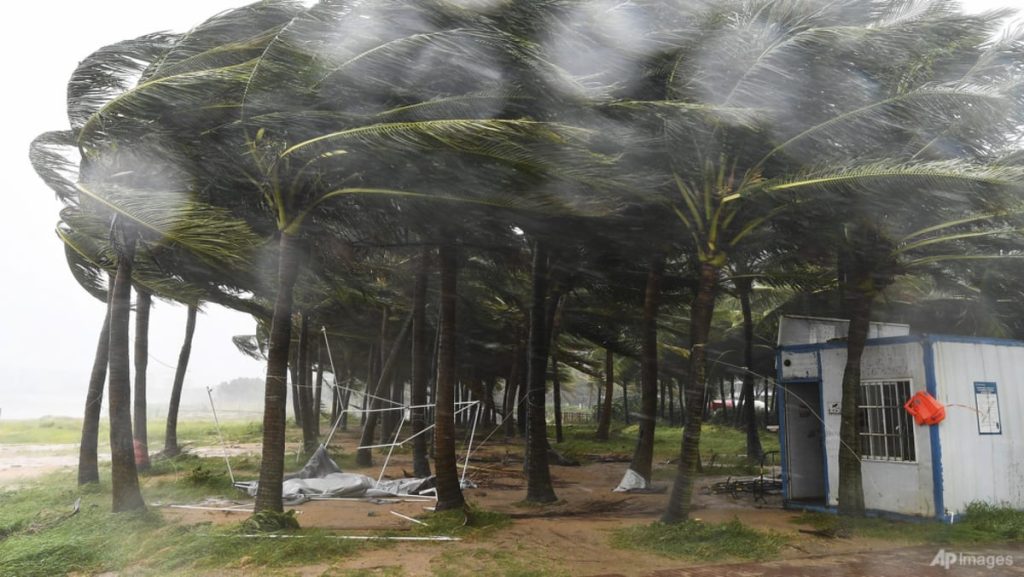Super Typhoon Yagi, the strongest storm in Asia this year, made landfall in China’s Hainan province on Friday, bringing powerful winds and heavy rain. With sustained winds of 234kmh, it was the second-most powerful tropical cyclone in 2024 after Hurricane Beryl in the Atlantic. The storm caused power outages affecting 830,000 households in Hainan, known as “China’s Hawaii”. A massive emergency team was assembled to restore power, with 260,000 households back online by Friday night.
Yagi had intensified greatly since causing deaths in the Philippines, hitting Wenchang in Hainan in the afternoon. The storm led to the cancellation of flights and ferries, business closures, and warnings for people to stay indoors in the province of over 10 million residents. Schools, businesses, and transportation were also affected in Hong Kong, Macau, and Guangdong province as well as airports in Vietnam, Laos, and other areas in the storm’s path for the weekend.
The impact of Super Typhoon Yagi was severe, with power outages and damages to infrastructure reported in Hainan. The storm brought chaos to the province, disrupting daily life and leading to the mobilization of emergency response teams. As one of the most powerful storms of the year, Yagi left a trail of destruction in its wake, showcasing the force of nature and the challenges it poses to vulnerable regions like Hainan.
The situation in Hainan was dire as Super Typhoon Yagi caused havoc and made it difficult for residents to navigate daily life. The severe weather led to widespread power outages, forcing households to rely on emergency response teams for help. The province was left grappling with the aftermath of the storm, with significant resources needed to restore normalcy and repair damages caused by Yagi.
The impact of the storm rippled through multiple regions, affecting transportation, businesses, and schools in Hong Kong, Macau, Guangdong province, and beyond. The disruption caused by Super Typhoon Yagi highlighted the vulnerability of these areas to extreme weather events and the need for greater preparedness and resilience. The storm’s force and intensity served as a stark reminder of the power of nature and the importance of effective disaster response measures.
As recovery efforts got underway in the aftermath of Super Typhoon Yagi, the affected regions faced the daunting task of rebuilding and restoring normalcy. Emergency response teams worked tirelessly to address the damages and power outages caused by the storm, while residents braced for the challenges ahead. The impact of Yagi served as a wake-up call for better preparedness and resilience in the face of extreme weather events, underscoring the need for proactive measures to mitigate future disasters.


